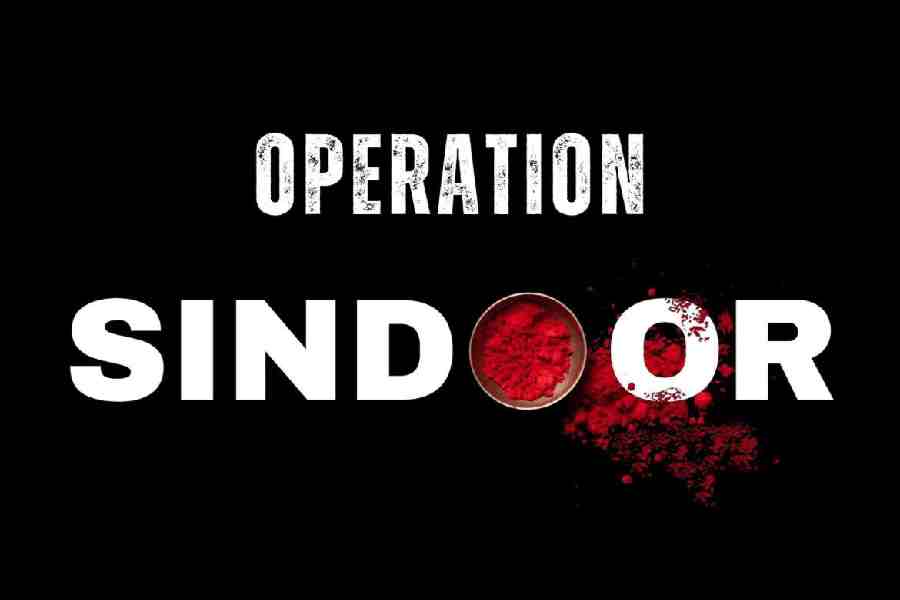
Venice by Jiro Taniguchi
(Ponent Mon Ltd, Rs 1,900)

Commissioned as part of the Louis Vuitton Travel Book series, Venice, by Japanese manga writer and artist Jiro Taniguchi, transports the reader to a flaneur through the narrow streets and canal banks of the ancient city. Originally published in 2014 and jointly republished in English in 2017 by Ponent Mon and Fanfare, the beautifully illustrated 132-page book is about a young man who finds his mother’s lacquered box filled with photographs of a couple in Venice and decides to retrace their steps through the city. The intricately detailed illustrations in wide-set panoramic panels — designed to make readers feel like they are actually situated in the story — have all been done in watercolour and pencil colours, giving the narrative a dream-like atmosphere. We highly recommend this book, both for those who have already visited Venice and those who haven’t — you will discover something new with every panel you read.

Present by Leslie Stein
(Drawn and Quarterly, Rs 1,410)

Confessional art is given a new mode of expression by Leslie Stein in her “diary-comic”, Present, which takes the reader on a journey through adolescence, memory and the city of New York through the eyes of the artist. Stein shares brightly coloured vignettes of her life — from attending a rave to closing up a bar, to her first job as a waitress and her fear of losing her last memories of her grandfather. The reader experiences many emotions, situations and timelines simultaneously in the story, mimicking the associative way in which memory works, and begging the question, what is the “present” and if we are ever in it. Delicately illustrated with watercolour and ink, the book is a funny, nostalgia-filled trip from beginning to end.

Zanardi by Andrea Pazienza
(Fantagraphics, Rs 1,985.34)
Zanardi was a character created by Pazienza in the early 1980s, and published from 1981-1988, until Pazienza’s death from heroin overdose. The book reflects the youth its creator experienced — rude, casually violent, raw, debauched and fuelled by the sex, drugs and rock-’n’-roll lifestyle of the punk-rock movement of the ’80s. Reading it is an overwhelming experience, as one drowns in vivid Technicolor and thick, dark lines that form grotesque Robert Crumb-like characters straight out of the underground comix culture of the 1960s. Although the barely-connected threads of plot can be hard to follow, the energy of the book makes it unputdownable.

X-Men: Grand Design by Ed Piskor
(Marvel, Rs 1,728)

Whoever thought that the almost 60-year history of one of Marvel’s most successful endeavours could be squashed into one series of books? Ed Piskor certainly did! The new book is made for both fans and non-fans to love: while hard-core comic lovers will definitely want to take a look at this compressed biography, non-fans can finally get started on the series without having to wade through a confusing, multi-arc universe with dozens of characters and almost as many plotlines. The first volume includes both well-known and obscure storylines, combining it all into a single comprehensive piece of lore, as well as recoloured original comics and pinups from the 1960s run of the series. The second volume, called X-Men: Grand Design, Second Genesis, is scheduled for release later this year in the US.

How to Read Nancy: The Elements of Comics in Three Easy Panels by Paul Karasik and Mark Newgarden
(Fantagraphics, Rs 1,681)

This book started out as an essay written in 1988, which deconstructed a single three-panel strip of the comic Nancy, published in 1959, in eight different ways, proving that everything about how to read comics can be explained via this single strip. Fast forward to 2018 and the new edition of the book explores an astounding 43 different aspects of this strip, along with dozens of restored line art strips from that comic, more than a dozen meticulously compiled appendices of references and a complete biography of the history of the comic! The book is a monumental work of research and theorising undertaken by Karasik and Newgarden. It’s both a commentary on how to conduct a close reading of art as well as a comprehensive history of the creation and publication of comics in the United States.

Happiness 6 by Shuzo Oshimi
(Kodansha Comics, Rs 1,312.50)

This one’s for the Twi-hards (Twilight fans, silly) looking to try something new in the genre of supernatural-horror-romance. Happiness is an ongoing series, with the first book having been published in July 2015. The series follows a teenaged boy, Makoto Okazaki, who was constantly bullied at school until one night, on his way back from his friend’s house, he is attacked by a mysterious stranger, who offers him a choice: he could either die, or choose to live as a vampire. The medium of the novel turns the old-school adolescent-vampire storyline into a dark and gripping series with plots of adolescent friendship and romance unfolding alongside grisly scientific experiments, gang wars, secret agents and serial killers. There are seven books so far, with an eighth slated for release in May 2018. However, only six are available in India as of yet.

Shade, The Changing Girl, Volume 1: Earth Girl Made Easy by Cecil Castellucci, Marley Zarcone, Kelly Fitzpatrick, Ande Parks and Ryan Kelly
(DC Comics, Rs 1,333.64)
Aliens, superpowers, mind-control, bullying, learning, teenage drama and growing up: Shade, The Changing Girl has it all. The series, under Gerard Way’s Young Animal imprint of DC Comics, looks at Loma, a disaffected, bored young woman from the planet Meta who steals the “madness coat” from a museum and inhabits the body of Earth-born Megan Boyer, who has been declared brain-dead. Eager for a fresh start, the alien girl discovers that the new beginning could be complicated, because Megan brings her own history to the table. How will Loma deal with this? The current series, after Volume 2 (published in February 2018 and subtitled the Little Runaway), has continued to bring out new issues, having changed the protagonist’s name to Shade, The Changing Woman. But the new issues are not available in India yet, so plenty of time to catch up with the first volume!

Anti-Gone by Connor Willumsen
(Koyama Press, Rs 1,242)
Need a dose of existential broodiness? Pick up a copy of Anti-Gone. Set in a tiny tropical island in a post-apocalyptic dystopian future, Anti-Gone is about shipmates Spyda and Lynxa, who struggle to escape the apathetic stagnancy of their lives on the isolated, self-contained island. After they’re given free tickets to a film by a mysterious stranger, the two make their way to the cinema in Metropolis, navigating through communities submerged by global warming-induced sea levels, strange beasts and weary drug dealers. The surreal odyssey followed by the actual film-watching experience emphasises alienation amongst human beings, enhanced by the jigsaw-puzzle arrangement of the panels and the minimalist and monochromatic art style with sparing but witty dialogue.

Spinning by Tillie Walden
(First Second, Rs 1,074)

Spinning, the memoir/coming-of-age story by Tillie Wilden, based on the creator’s own experiences with figure skating, follows the book’s protagonist as she competes at ice skating rinks across the state. She practises from dawn to dusk every single day, until one day she begins to question her purpose, recognising that her skills simply were not enough to make a significant mark in the sport, even as she begins to realise that her sexuality may set her apart as well — she knows that she is gay. The dual-tone illustrations are perfect at transferring the smooth lines of ice skating from the rink to the page and they feel even more intimate once we realise how recent the story is — Walden is only 21. It’s a perfect gift for young adults struggling with their own issues of identity.

Extremity Volume 1: Artist by Daniel Warren Johnson and Mike Spicer
(Image Comics, Rs 1,172)

A small border dispute escalates into a blood feud between two tribes, the Roto and the Paznina, in the intense, post-apocalyptic, fantastical world of Extremity, leading to an exhausting cycle of war and bloodshed. The first volume of a planned long-term series explores the pointlessness of such horrors, and as the body count in the pages climb, the reader begins to question if the tribes’ mania for revenge is worth the sorrow it brings. The detail-heavy artwork adds to the intense pace and claustrophobic violence of the story, but they are perfectly complementary to the theme.

Language Barrier by Hannah K. Lee
(Koyama Press, Rs 1,512.27)

This playful, non-chronological collection of magazines takes a look at the everyday life of women and artists, exploring themes like dating, love, sex, relationships and emotions. The artwork evolves from a more-or-less straightforward comic book style in the first section, “Hey Beautiful”, to a more text-based, typographical, poster-like style in the fourth and last section, “Close Encounters”. In many panels, there is no text at all, just the juxtaposition of conflicting images, such as images of items of luxury versus those of necessity in the second section, “Shoes over Bills”. The colourful artwork is sparing and layered on some and overbearing and in-your-face in others, and irony is present at all levels throughout the text. Pick up this book for a laugh at the oddities of daily life.

Spy Seal Volume 1: The Corten-Steel Phoenix by Rich Tommasso
(Image Comics, Rs 828)
What’s better than an old school James Bond-style spy story? A tongue-in-cheek take on an old school, James Bond-style spy story, as Tommasso proves in his cheeky Spy Seal series! The books follow Malcolm, an unemployed Seal who accidentally uncovers an international espionage ring and is immediately inducted into the hallowed halls of MI6 as a recruit. He must now travel around the world as part of a thrilling chase with Kes the Kestrel, his partner whom he promptly falls in love with! Fans of Tintin can’t miss the similarities in the illustration styles, which make the familiar story all the more nostalgic and witty. This one is suitable for younger readers, too; although the books have some complicated political jargon, it’s nothing that a young adult can’t handle.

Monograph by Chris Ware
(Rizzoli, Rs 4,651.37)
Chris Ware’s works are notoriously difficult to read, and Monograph, his memoir that is as much an achievement in the art of publishing as it is in the art of the graphic novel, is no exception! The book is an anthology of lessons learnt by a cartoonist whose works have found homes in publications like The New Yorker and The New York Times as well as museums like the Whitney Museum of American Art. Its densely packed, collage-like, diagrammatic art style is typical of Ware’s usual technique, ideally realised in his masterpiece Building Stories, and contains his musings on everything from the life of an artist and the purpose of art to the importance of deadlines and his experience of being a stay-at-home dad. Monograph needs to be decoded in order to be read, so pick up this book if you have a fascination for art that presents like a puzzle but reads like philosophical truths.

Poppies of Iraq by Brigitte Findakly and Lewis Trondheim
(Drawn and Quarterly, Rs 1,515)
How can one tell that signs of political oppression are creeping in to what was otherwise a normal childhood? In Poppies of Iraq, Brigitte Findakly recalls this change that she watched her homeland of Iraq undergo. The book is both a mourning account and a tribute to a secular, harmonious, peaceful way of life that the author and her family once knew. Trondheim’s colourful, childlike illustrations deepen the sense of sorrow and betrayal at a displacement they can never get over.

Tenements, Towers & Trash by Julia Wertz
(Black Dog & Leventhal, Rs 1,995.68)

Based on Julia Wertz’s illustrated columns in The New Yorker and Harper’s Magazine, Tenements, Towers & Trash is a hilarious and idiosyncratic history of one of the world’s most famous and most visited cities — New York City. With close-spaced writing and thin-lined illustrations, mostly in black and white, the book takes the reader beyond the tourist traps and under the city’s skin, to secret pizzerias from bygone days, hidden boatyards, odd laws and prohibitions and hair-raising urban legends, in whimsically titled sections such as “The History of New York’s Famous Egg Cream”. It’s a book that only one deeply in love with the city could have written.

The Best We Could Do: An Illustrated Memoir by Thi Bui
(Abrams Books, Rs 1,857.95)
It’s hard to believe that this book is cartoonist Thi Bui’s first graphic memoir, given the scope of her task and the proficiency with which she accomplishes it. The Best We Could Do interweaves the story of Thi’s own childhood and adolescence in the United States with her parents’ life in, and ultimate escape from, the uncertainty and violence of Vietnam in the 1960s and the 1970s. The story brings forth the struggles of life as a refugee, and of the questions one is forced to ask when one loses one’s home and sense of identity: Who are we? How did we end up here? Where are we going? These are all questions that are politically relevant in 2018. The non-linear story-telling of the book makes it all the more powerful, as does the quiet, diffused style of art, where the details of the prose often contrast with the simplicity of the lines in the illustrations. Pick this one up for a story of blood, sweat and tears, but also of healing in equal measure.
Text: Rushati Mukherjee










